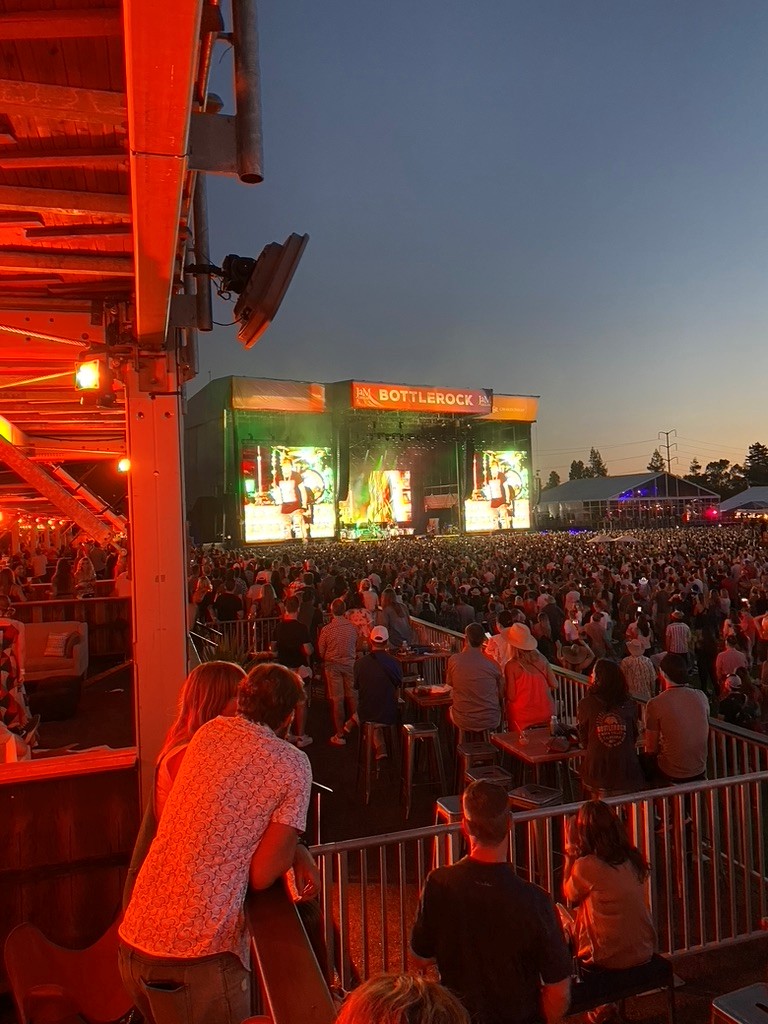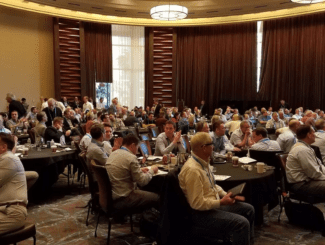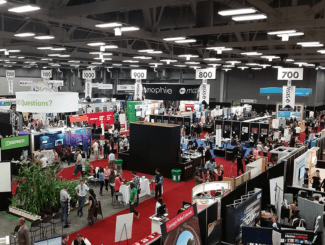
The hyper-directional wireless antenna market for stadiums is getting hyper-competitive, with news of a planned acquisition in the Wi-Fi space and a new competitor emerging in the cellular market.
On the Wi-Fi product side, sources have told Stadium Tech Report that Fortinet, a leader in networked security, may have already agreed to acquire Everest Networks, a manufacturer of long-reach or “hyper-directional” stadium Wi-Fi antennas. And for cellular networks, Galtronics has recently introduced new versions of a hyper-directional multi-beam antenna product line designed to compete directly with similarly performing products from MatSing.
UPDATE, 5/17/25: After our report was published, Fortinet published information on the web that confirmed they had acquired Everest.
Challengers emerge as a trend develops
Looking back just a couple years, the industry narrative for stadium wireless networks was that “under the seat” was the best solution, for both cellular and Wi-Fi. But as more venues tested and then deployed top-down “hyper-directional” antennas (see recent feature), the immediate positive returns put the established design beliefs into question.
With several years now of successful stadium deployments, MatSing has proven the value of its multi-beam device approach for cellular while Cisco has taken the focused-beam Wi-Fi concept pioneered by Everest and found greater success by combining the technology with an enterprise feature set. Until now, those two companies have cornered the hyper-directional market. But the inevitable emergence of competition spurred by success has arrived.
On the Wi-Fi side, Fortinet — a company with $6 billion in yearly revenues for 2024 and a portfolio of important networking technologies including embedded security and AI tools — is planning to acquire Everest, most likely to combine the antenna technology with its existing enterprise-class Wi-Fi components. Other current Wi-Fi gear vendors have also announced imminent plans for hyper-directional offerings, some scheduled for release later this calendar year.
For cellular stadium networks, longtime antenna supplier Galtronics is rolling out new versions of a hyper-directional multi-beam antenna product line that is designed to challenge MatSing’s feature set of delivering focused beams of communications from greater distances than traditional antenna gear.

Why does the ability to place antennas farther away make sense? As research by Stadium Tech Report has found, hyper-directional antenna deployments are proving to make financial sense with savings for both the capex and opex budgets of stadium network administration.
With fewer devices to install, a hyper-directional antenna design will typically cost less to purchase and deploy than a comparable under-seat plan. Operationally, STR has found that under-seat networks can sometimes contain a “hidden cost” of multiple millions per year in maintenance, for tasks including cleaning around devices and management of network devices in retractable seats.
Hyper-directional antennas also can contribute directly to the revenue bottom line by finally delivering high-quality networking services to the most expensive concert and game seats, those on or near the stadium floor. With designers at all three of the next-generation NFL stadiums on board with integrating hyper-directional antenna tech, it’s perhaps no surprise that more competition would emerge. Right now, other vendors are playing catch-up to Cisco and Matsing. Who will win?
Fortinet takes the buy vs. build path to stadium markets
For Wi-Fi networks, a startup company called Everest that spent part of its life as a subsidiary of electronics giant Panasonic was the first to successfully build an antenna that could support “long throw” connectivity, through some innovative RF filtering that kept the transmission beams highly focused, or hyper-directional. The initial 2017 offering from Panasonic and Everest, which was advertised as being able to reach 175 feet, included four Wi-Fi antennas (three using the 5 GHz band, one using 2.4 GHz) in a single enclosure, a twist that made it easier for venues to cover more space with fewer devices.
Everest’s success in winning a prime NFL stadium contract from the Philadelphia Eagles for coverage at Lincoln Financial Field in 2017 in part prompted Cisco to start developing its own version of a hyper-directional antenna. In 2021, Cisco released the first version of its code-named “Marlin” 9104 antenna, which the company said could communicate at distances up to 200 feet.
During that stretch of time, however, Everest faded from public view. Shortly after winning its deal with the Eagles, Everest became a standalone company after a Panasonic reorganization. Though Everest would go on to win another NFL deployment deal, at MetLife Stadium in New Jersey, and another at the home of the NHL’s Florida Panthers (a venue in Sunrise, Fla., then called BB&T Center, now known as Amerant Bank Arena), there have been no other publicly announced stadium deals for Everest since then. The lack of deals is most likely due to the fact that Everest was never able to produce the kind of enterprise-management features that most big-network purchasers seek from a provider.
While Everest’s principals have been keeping their antenna technology development active — STR has found several recent FCC applications for Wi-Fi 7 versions of Everest products — the company has not been able to find a home inside a bigger company, its most logical path forward, until now. But why Fortinet, a seemingly minor player in the Wi-Fi market?
Though its market share in Wi-Fi specific gear may be small when compared to competitors like Cisco and HPE/Aruba, Fortinet does actually have a very visible presence in sports stadiums, mainly due to its well-respected security and firewall technology. In addition to supplying security technology to multiple NBA teams, Fortinet also has two high-profile customers for its networking security offerings, including soccer powerhouse FC Barcelona and the DP World Tour.
Among its technology stack, Fortinet has developed AI-based networking tools that could make deployment and management of large venue-type networks easier. It also could offer teams and venues best-in-class integrated network security for both fan-facing and back-of-house operations.
According to STR sources, Fortinet has been looking for a way to get into the large public-venue networking business, and by acquiring proven technology, it might accelerate its ability to compete. The real question is whether Fortinet will be able to deliver a viable product before other competitive offerings arrive. Neither Fortinet nor Everest executives replied to inquiries from STR about the rumored acquisition.
Galtronics taking aim at MatSing
The unique capabilities of MatSing’s signature sphere-shaped multi-beam “lens” antennas have provided a stunning string of successes for the Irvine, Calif.-based company over the past few years. In addition to being used as the base technology for a radically large and dense distributed antenna system (DAS) deployment at AT&T Stadium, MatSing antennas have also been heavily deployed at the past two Super Bowl venues, including Allegiant Stadium in Las Vegas in 2024 and Caesars Superdome in New Orleans in February.
Galtronics, a company formed in 1978, has taken notice of MatSing’s success and has started to prioritize development and improvement of its own line of multi-beam antennas, according to the company. Though it does not have equipment that can match the size of MatSing’s largest antennas (which can support up to 48 separate radios), Galtronics is betting on venues being attracted to smaller, lighter and less-expensive versions of multi-beam devices for greater deployment flexibility and cost savings.
Currently, Galtronics said it is in the process of adding the support to remotely administer the “tilt” angles in the individual antennas to its product line, a capability that allows the antennas to be redirected for enhanced performance or for different event setups.
Already, the new Galtronics enhancements have earned the company several stadium network wins, including at Rogers Centre in Toronto and BC Place in Vancouver, and at Bryant-Denny Stadium at the University of Alabama. Galtronics, whose U.S. headquarters are in Tempe, Ariz., is a subsidiary of the Toronto-based Baylin Technologies, an OEM of RF technology for a wide range of vertical markets.








